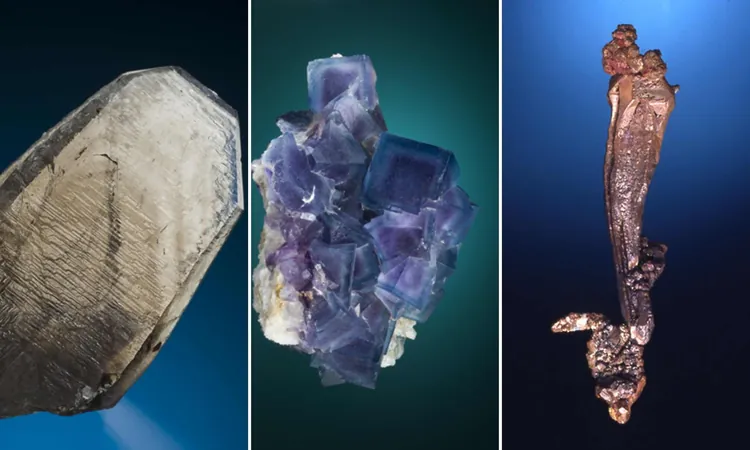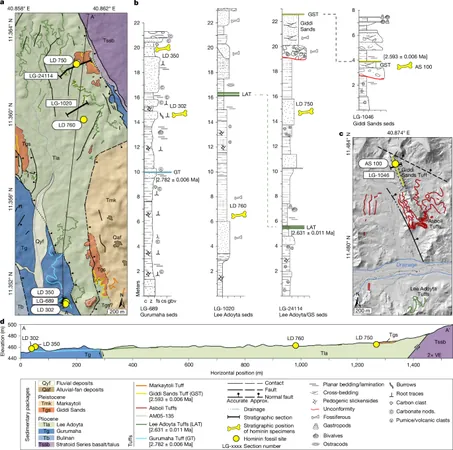
Groundbreaking Discovery: Three New Minerals Found in the U.S. Southwest!
2025-06-22
Author: Wai
A Geological Treasure Unearthed!
In a stunning revelation, geologists have identified three previously undocumented minerals in the windswept landscape of Cookes Peak, Luna County, New Mexico, expanding the global mineral tally to an impressive 5,998!
Meet the Newcomers: Raydemarkite, Virgilluethite, and Stunorthropite
The newly discovered minerals include raydemarkite, virgilluethite, and stunorthropite. This exciting finding highlights how rare it is to add new members to the mineral kingdom, unlike the vastly populated realms of plants and animals.
Dr. John Rakovan, a leading geologist from the New Mexico Bureau of Geology and Mineral Resources, emphasizes this rarity: "While there are millions of species in the plant and animal kingdoms, the mineral domain remains far less populated." Every new addition is a significant event in the geological world!
Why Cookes Peak Keeps Surprising Us
Towering at 8,404 feet, Cookes Peak is known for its granodiorite core, which once transported ore-rich hydrothermal fluids responsible for leaving behind valuable deposits of lead, zinc, silver, and fluorite. It's also within these chemically rich zones that the conditions for these unique minerals to crystallize were met.
What Makes Each Mineral Unique?
Raydemarkite, with a chemical formula of MoO₃·H₂O, boasts flexible, colorless needle-like crystals. Virgilluethite, characterized by its striking yellow-green plates, often overgrows other crystals, while stunorthropite presents as short, milky blades.
The naming honors local figures who have significantly impacted regional geology: collector Ramon S. DeMark, economic geologist Dr. Virgil W. Lueth, and professor Dr. Stuart A. Northrop.
A Closer Look at Raydemarkite
Raydemarkite's unique trifling structure forms thanks to distorted chains of MoO₅(H₂O) octahedra, held together by hydrogen bonds, giving it surprising flexibility.
The Science Behind Virgilluethite and Stunorthropite
Virgilluethite follows a similar chemical pathway but takes on a monoclinic sheet-like formation, showcasing its ability to preserve the shape of its predecessor, sidwillite, while altering its internal chemistry.
Stunorthropite, on the other hand, immortalizes Dr. Stuart Northrop, a renowned author in the field. Its crystalline structure plays a crucial role in tracking late-stage ammonium activity within the Cookes Peak geological system.
Why the Discovery Matters!
Although the International Mineralogical Association processes around 90-100 new mineral proposals each year, the addition of these three is a significant achievement that can refine our understanding of Earth’s chemical makeup.
Minerals like raydemarkite and virgilluethite provide vital data for studying molybdic acids, which have potential applications in sensors, batteries, and hydrogen production.
See These Marvels in Person!
Now, fans of geology can view specimens of these fascinating minerals at the New Mexico Mineral Museum in Socorro. This display not only highlights the unique chemistry of the Earth but also serves as a vital resource for researchers diving deeper into crystallography and material science.
Natural vs. Synthetic: The Key Differences
While synthetic versions of raydemarkite and virgilluethite have existed for over a century, their natural counterparts behave differently due to environmental factors like trace impurities and bonding changes.
As Cookes Peak continues to be explored, more groundbreaking discoveries await. Perhaps collectors will find even more rare minerals hiding beneath the surface, waiting for their turn to shine!





 Brasil (PT)
Brasil (PT)
 Canada (EN)
Canada (EN)
 Chile (ES)
Chile (ES)
 Česko (CS)
Česko (CS)
 대한민국 (KO)
대한민국 (KO)
 España (ES)
España (ES)
 France (FR)
France (FR)
 Hong Kong (EN)
Hong Kong (EN)
 Italia (IT)
Italia (IT)
 日本 (JA)
日本 (JA)
 Magyarország (HU)
Magyarország (HU)
 Norge (NO)
Norge (NO)
 Polska (PL)
Polska (PL)
 Schweiz (DE)
Schweiz (DE)
 Singapore (EN)
Singapore (EN)
 Sverige (SV)
Sverige (SV)
 Suomi (FI)
Suomi (FI)
 Türkiye (TR)
Türkiye (TR)
 الإمارات العربية المتحدة (AR)
الإمارات العربية المتحدة (AR)